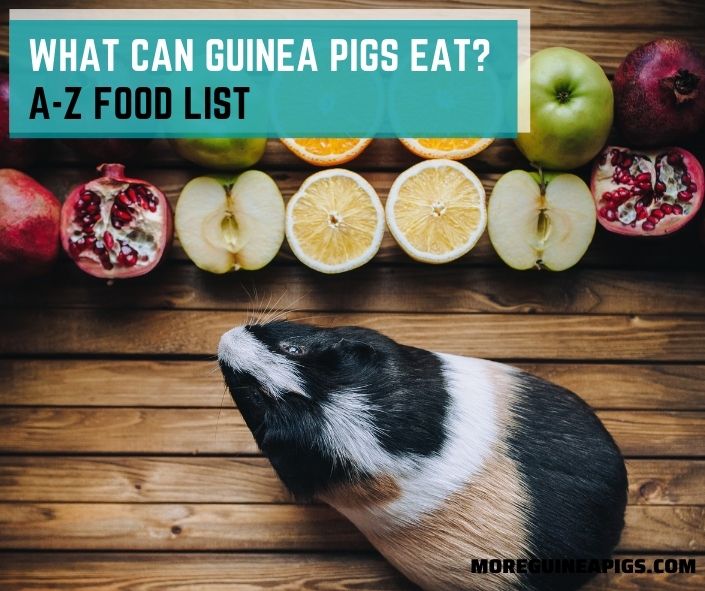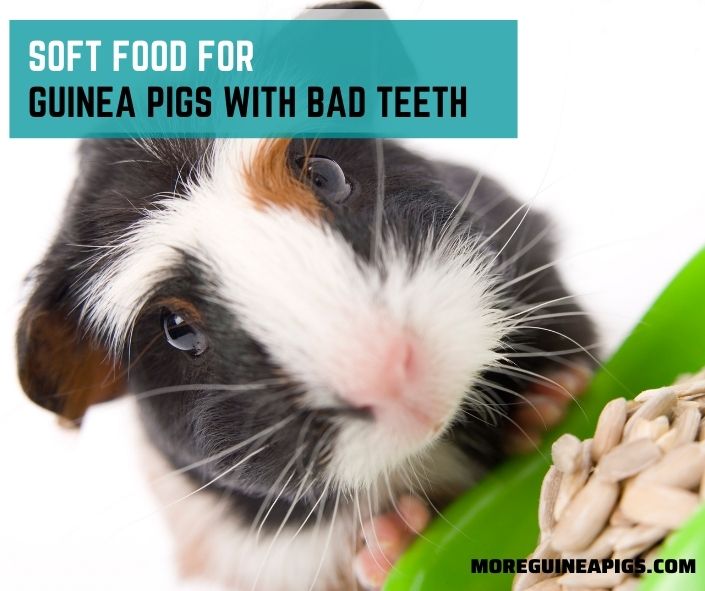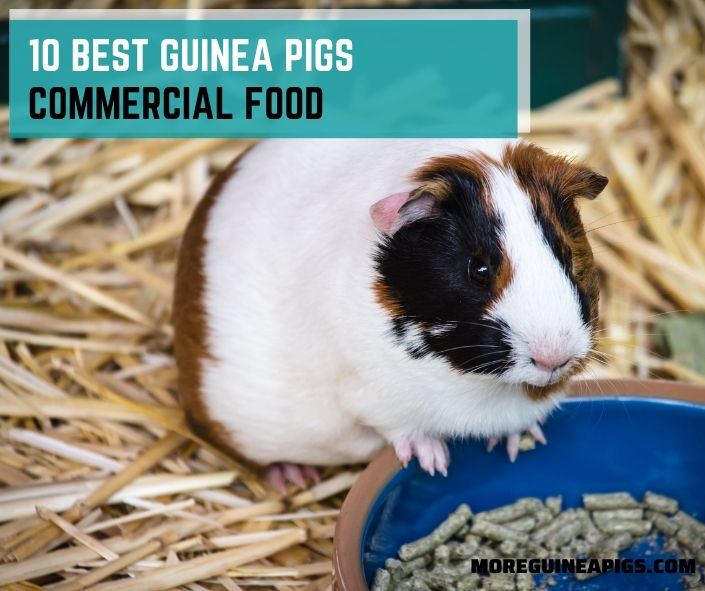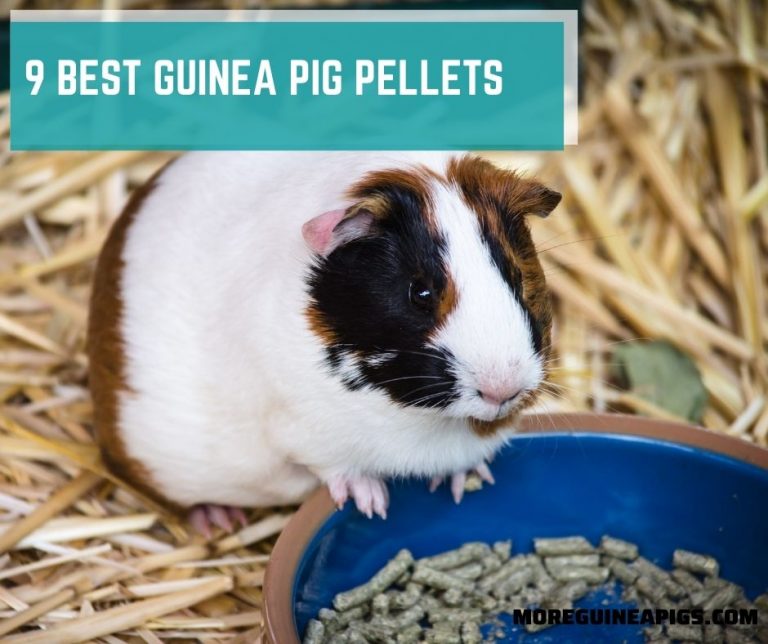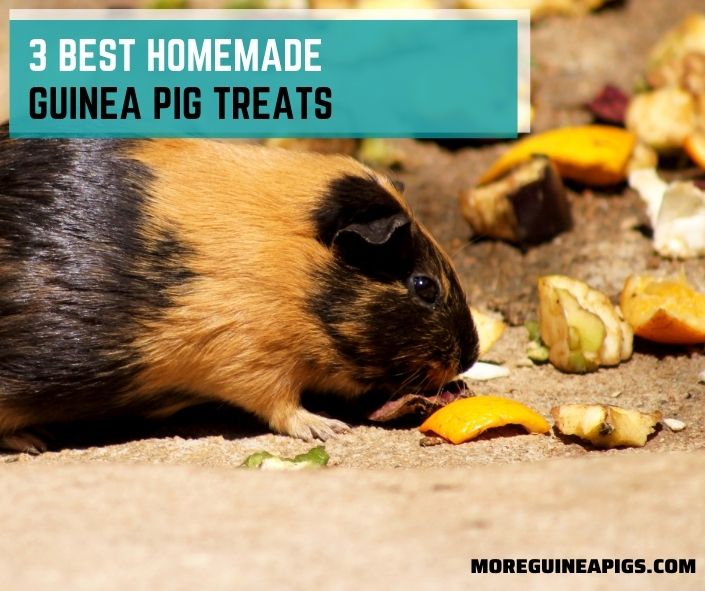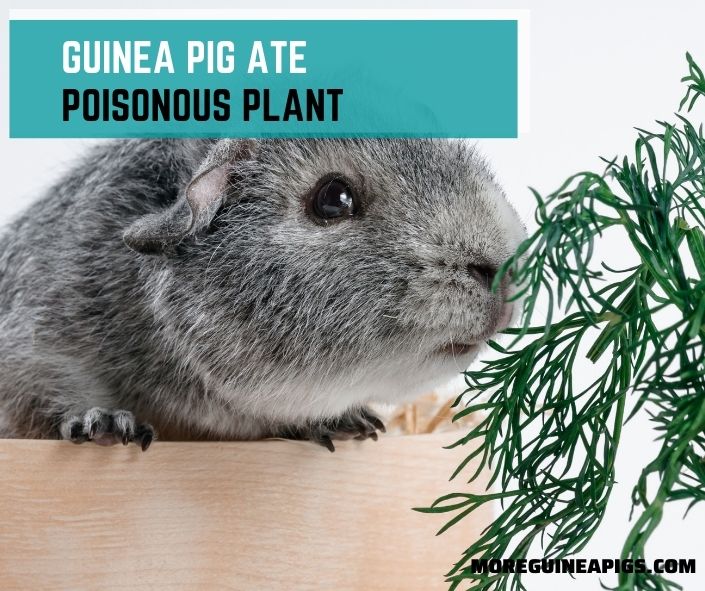What Can Guinea Pigs Eat? A-Z Food List
When you have a pet guinea pig, it is your responsibility to feed it well and take care of it.
This guide will tell you everything about a healthy diet for your Guinea pig.
It answers questions like what do Guinea pigs eat in the wild and what can you feed your pet at home to mimic their natural diet closely.
We will also cover important topics like how much hay to feed it, pellets, and fruits and vegetables.
Let us dive right into it!
What Do Guinea Pigs Eat in The Wild?
In the wild, Guinea pigs eat a variety of herbivorous foods – mainly plants, roots, fruits, stems, vegetables, wild berries, etc.
They also eat a variety of grasses and hays. In fact; guinea pigs spend a major part of their day foraging on wild vegetation. This is also how pet parents should try and feed their guinea pigs in captivity.
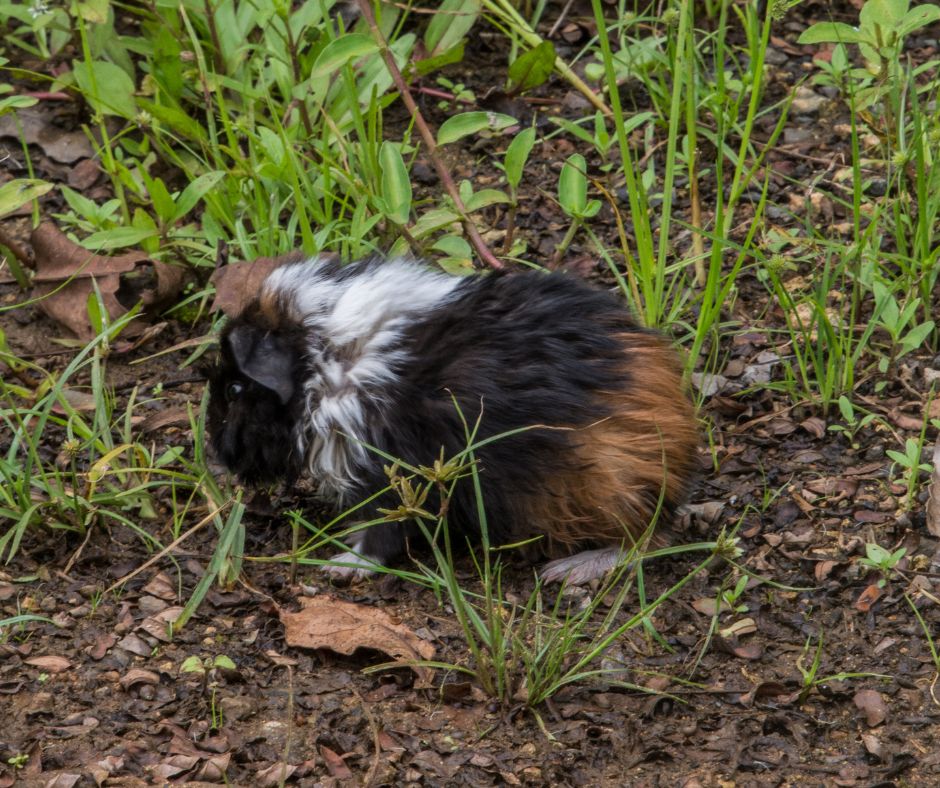
What Can Guinea Pigs Eat as Pets?
Guinea pigs love to eat. An adult guinea pig will spend almost 6 to 8 hours per day feeding! These herbivores need balanced nutrition which you can provide through hay, pellets, and a variety of fruits and vegetables.
You can provide around 1/8th cup of commercial pellets to your piggy on a daily basis. Choose pellets that are free from sugar, dried fruits, corn, and other unwanted ingredients.
Guinea pigs also need plenty of fresh hay; so keep a steady supply of timothy hay and orchard grass hay for your pet to chew upon.
This will provide your pet with proteins, vitamins, minerals, and fiber. The chewing action also keeps their continuously-growing teeth healthy and prevents dental abscesses.
Vitamin C is a very important nutrient for guinea pigs. It is necessary to prevent scurvy. Pellets will provide your pet with vitamin C but you must also provide it with fresh vegetables and fruits that are rich in this nutrient.
A typical daily diet of guinea pigs should look like this:
- 70-75% of the daily diet should be hay – timothy hay and/or orchard grass hay
- 20-25% of the daily diet should constitute commercial pellets
- 5 to 10% of food should be vegetables and leafy greens
- 0-5% of the diet should be treated.
Hay for Guinea Pigs
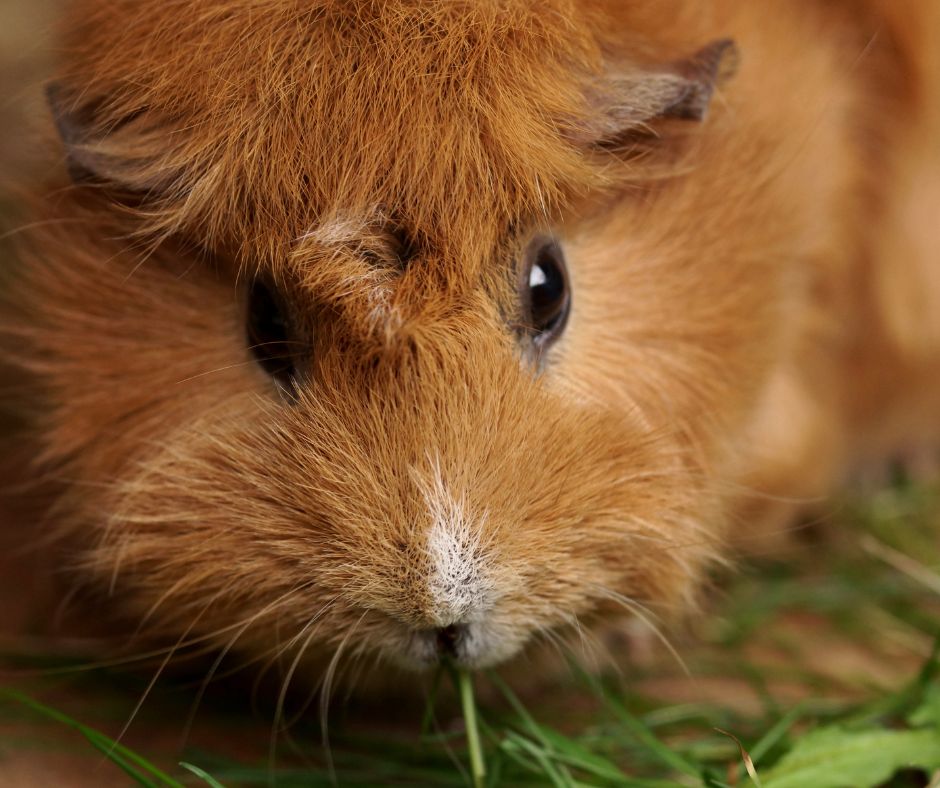
As mentioned above, hay is an important part of a guinea pig’s diet. Adult guineas need Timothy and orchard grass hay. For young piggies and pregnant/lactating ones, you can also include alfalfa hay for its higher calcium content.
Benefits of Hay for Guinea Pigs
- Provides a balance of fiber, healthy fats, vitamins, and minerals.
- Provides roughage and aids in the movement of food from the small and large intestines
- Hay wears down your piggy’s growing teeth which is important for preventing dental abscesses
How Much Percentage of Hay Do Guinea Pigs Need Daily?
Provide a never-ending supply of hay (timothy) hay to your adult guinea pig. Your furbaby should have access to hay 24 x 7!
Almost 70-75% of your pig’s diet should comprise hay. A fully-grown guinea pig will eat almost 3 ounces of hay per day or 6 lb. per month.
How to Feed Hay
Provide hay in hay racks or special hay feeders. This will keep the hay from being wasted and mixing with the bedding. Hay racks and feeders also keep the hay fresh longer.
The Best Hay
- For adult guinea pigs, timothy hay and orchard grass hay is the best. You can provide alfalfa hay to younger piggies or pigs that are pregnant.
- Look for hay that is fresh and green. You can buy it from pet stores or source it from a local farm. Many exotic veterinarians also stock it.
What Happens If You Don’t Provide Hay
Guinea pigs can go without hay for up to 24 hours. But most will die within 24-48 hours if they are not given hay.
Pellets for Guinea Pigs
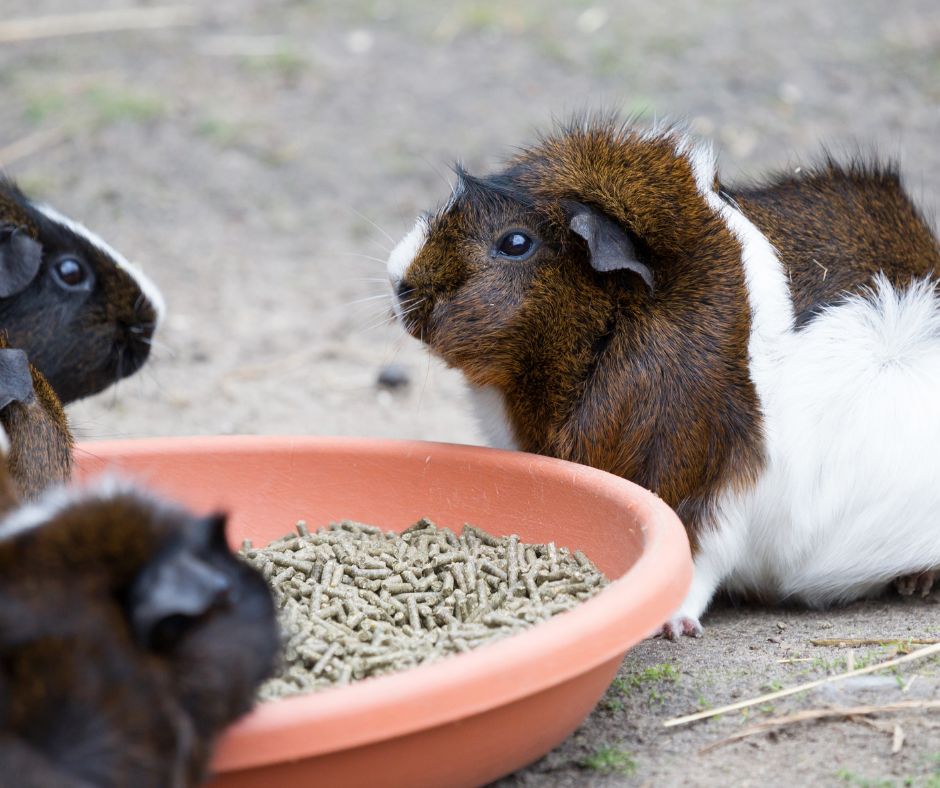
Special guinea pig pellets are readily available at pet stores. These are fortified with vitamin C, vitamins, and minerals.
Never feed rabbit pellets to guinea pigs! These are devoid of vitamin C and worse, could contain ingredients that could kill your tiny pets.
The same is true about hamsters, chinchillas, and other rodent pellets. Many of these contain grains and seeds which are not safe for your guinea pigs!
Benefits of Guinea Pig Pellets
- Fortified with vitamin C – necessary to prevent scurvy, build collagen, facilitate wound healing, etc.
- Formulated to meet the nutritional requirements of cavies
- Have an interesting texture that appeals to picky pigs.
How Much Pellets Should You Feed Guinea Pigs Daily?
A 2-lb. Guinea pig needs around 1/8th cup of pellets daily.
Best Pellets
There are many top-rated commercial pellets for guinea pigs. Brands like Oxbow and Kaytee are veterinarian recommended as they meet your pet’s nutritional needs. They are also free from unwanted ingredients like sugar, seeds, grains, etc.
How to Offer Pellets
- Place the pellets in a sturdy ceramic plate. You also but special pellet feeders.
- Place the pellets at one end of the cage and water dishes at the opposite end. This will encourage your guinea pigs to exercise and move!
- Leftover pellets can quickly become moldy and mold can kill your pet. So discard wet, moldy pellets right away.
- Keep your pet’s pellet food fresh by storing it in an airtight container and store it in the refrigerator.
What Happens If You Cannot Provide Pellets To Your Pigs?
Hay is the main source of food for your guinea pigs so your guinea pigs do not really need pellets. However, good-quality pellets can provide many nutrients to your cavy, especially vitamin C.
So, do make sure your pet’s diet at least contains a variety of vegetables and fruits to provide it with this vital vitamin.
Vegetables and Fruits for Guinea Pigs
Vegetables are important for guinea pigs as they provide many vital nutrients to your pet. Guinea pigs should eat fresh veggies daily. Fruits are usually higher in sugar content and can be fed as treats once in a while.
Vegetables
Provide fresh, washed vegetables to your guinea pig daily. Vegetables provide plenty of vitamin C and roughage to your buddy.
Leafy vegetables like chard, collard greens, lettuce, carrot tops, kale, and herbs like cilantro and parsley are ideal for your guinea pigs.

Provide each average-sized piggy with at least 1 to 1 ½ cups of leafy green vegetables daily. Here is a list of safe vegetables for cavies:
- Cucumbers
- Chard
- Sugar Peas
- Snap Peas
- Spinach
- Zucchini
- Cauliflower
- Kale
- Romaine Lettuce
- Radishes
- Corn Husks
- Carrots
We have the exact quantities of safe vegetables for your piggy to eat later in this guide.
Please note that some vegetables can be toxic to guinea pigs. Here is a list of vegetables toxic to guinea pigs
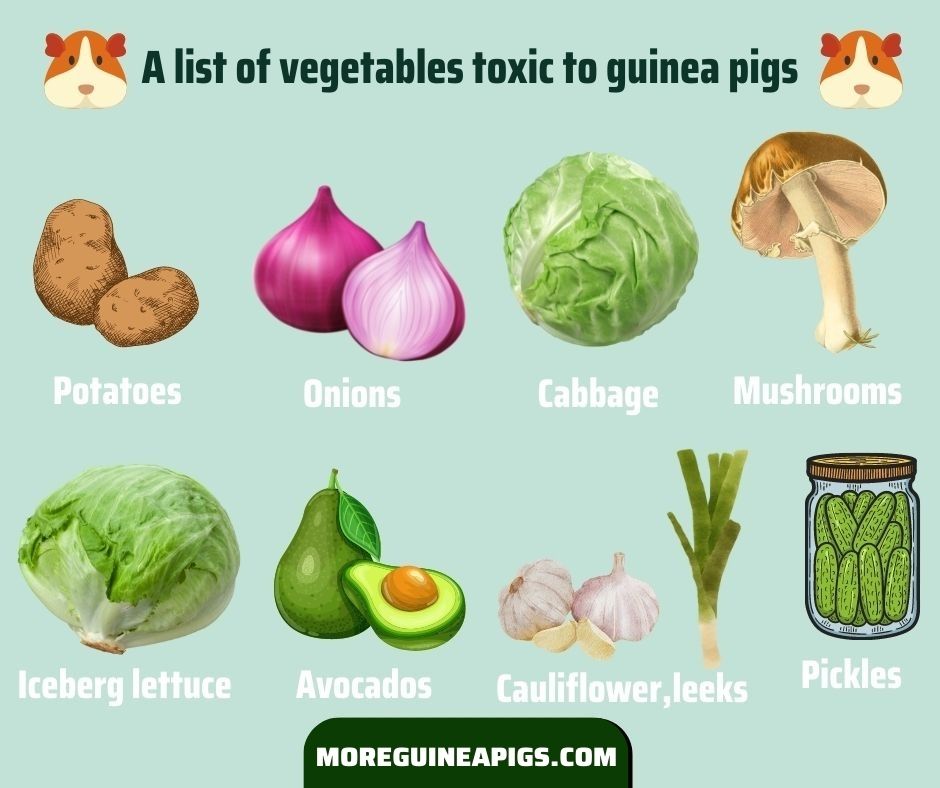
- Potatoes
- Onions
- Cabbage
- Iceberg lettuce
- Avocados
- Mushrooms
- Garlic, leeks
- Pickles
We have a detailed list of toxic foods for guinea pigs later in this guide.
Fruits
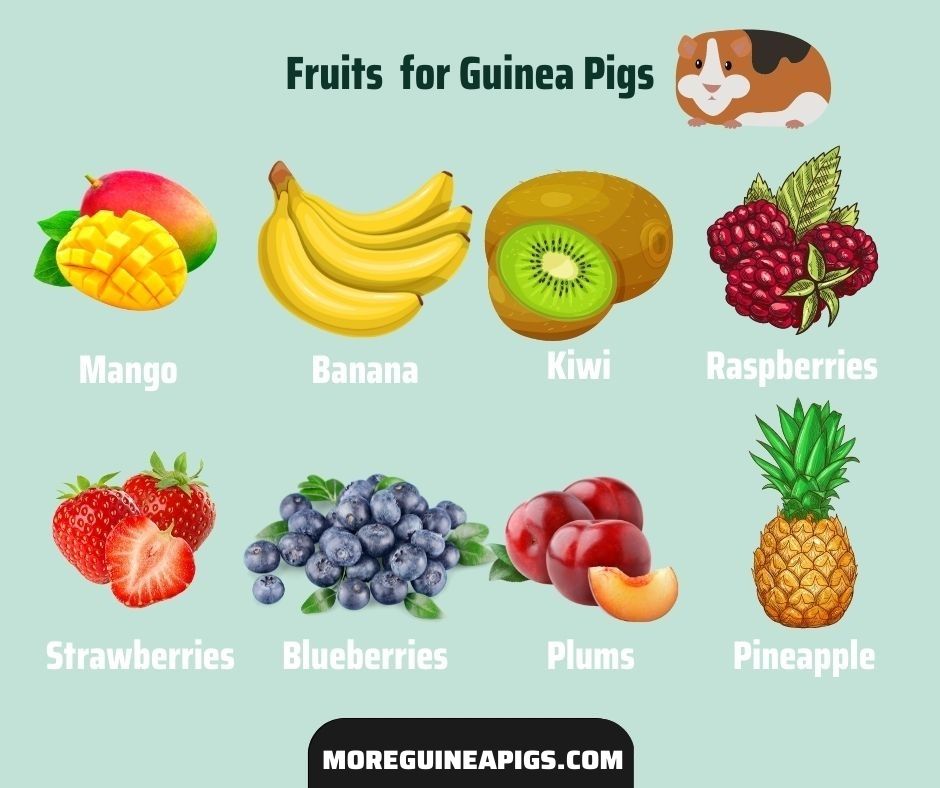
Certain fruits (in moderation) can also provide your guinea pigs roughage as well as vitamin C. Always provide washed and clean fruits to your pet. Remember: fruits are high in sugar and if your pet is on a diet for weight loss, do limit its fruit intake.
Most healthy. guinea pigs can safely eat 1-2 pieces of fruits once or twice a week. Here is a list of safe fruits for guinea pigs
- Mango
- Banana
- Kiwi
- Raspberries
- Strawberries
- Blueberries
- Mandarins
- Tangerines
- Plums
- Peaches
- Pineapple
- Pears
- Apples
- Bananas
- Oranges
Fruits like lemons and avocados are unsafe for guinea pigs. The high-fat content of avocados, as well as the pit inside the fruit, can both kill your pet!
In general, treat all fruits as snacks and only feed them in moderation to your cavy. Most fruits are high in sugar which can lead to obesity and diabetes in cavies.
Herbs
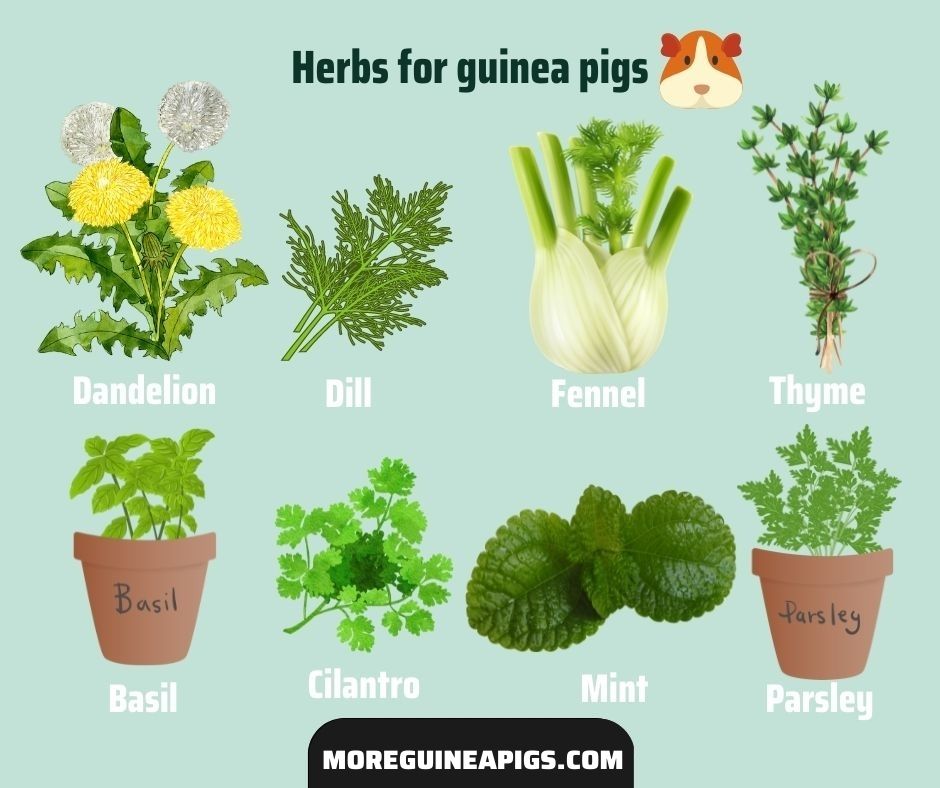
A wide range of herbs are safe for your cavy. These are:
- Dandelion
- Basil
- Cilantro
- Parsley
- Mint
- Dill
- Thyme
- Fennel
These herbs cleanse your pet’s system and also add roughage and fiber. However, feed them in moderation only, since, in excess, they could lead to diarrhea and digestive upsets.
Treats and Chews for Guinea Pigs
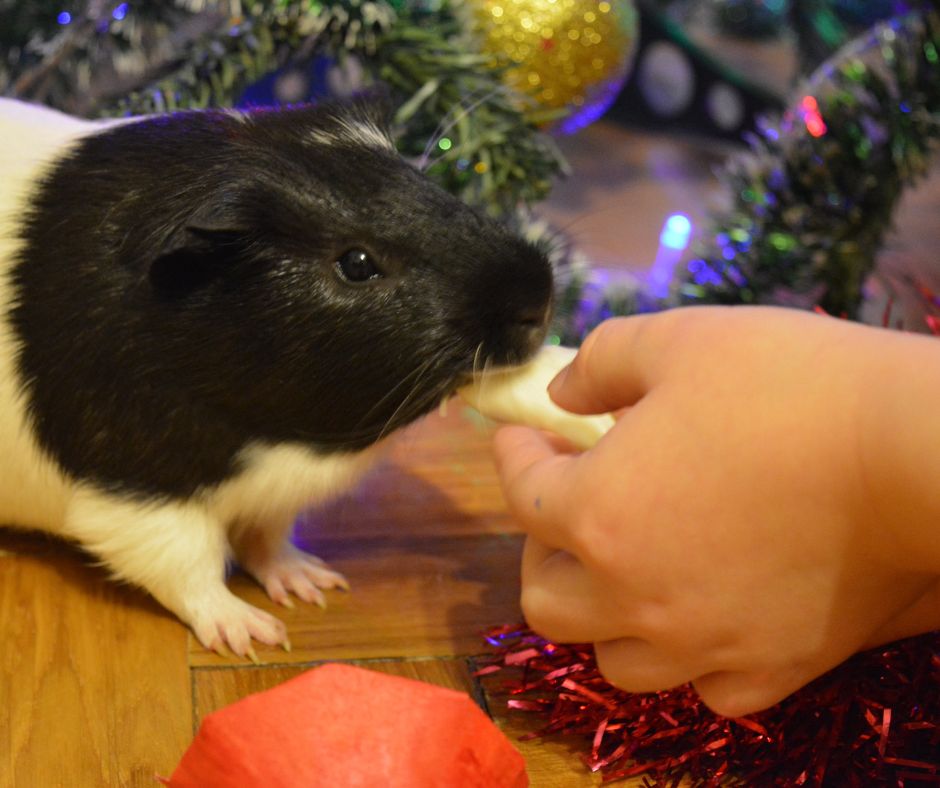
Treats like puffed rice, willow sticks, and hay treats are ideal for piggies to chew on. Berry flavored crunchies and treats are also popular as most guinea pigs love them.
Some vegetarian dog biscuits and sugar-free cereals like Cheerios are also generally safe. Be wary of commercially available treat sticks that contain seeds nuts and honey. These are rich in sugar and can also pose a choking hazard for your little pet.
Benefits of Healthy Treats
Treats are rewards for guinea pigs and they love to chew on them. Certain nutritious fruits can also be healthy treats for piggies. Many chews have dental benefits for pigs’ sharp teeth.
How Much to Feed
Treats should not exceed 5% of your pet’s diet. You can feed treats once or twice a week. Remember: fruits are also considered treats for guinea pigs.
Best Treats
Guinea pig hay sticks, bamboo sticks, cardboard tubes, rolled oats, fruits, and crunchy baked chews made from natural wood and fortified with vitamins are great for your pets.
What if You Don’t Feed Treats
Guinea pigs do not really need treats so it is fine if you do not feed them any.
Vitakraft Crunch Sticks Guinea Pig Treat
Water
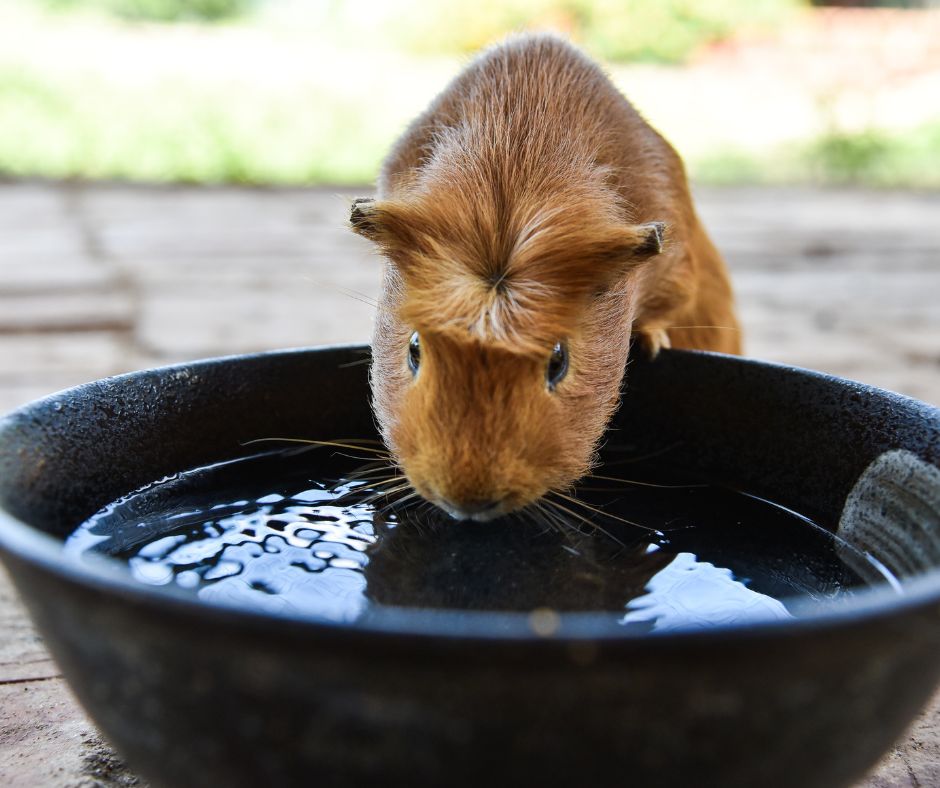
Guinea pigs need plenty of drinking water. You must ensure a steady supply of fresh, clean drinking water at all times.
On hot days, they will need even more water.
The amount of water your healthy guinea pig drinks will also depend on its diet. For example, pigs that eat watery fruits and vegetables might consume slightly less water on those days.
Role of Water
- Guinea pigs love to drink water. Water is the only liquid they drink as they cannot have milk, fruit juices, etc.
- Water is necessary for keeping their tiny bodies hydrated.
- It helps flush out toxins and regulates body temperature as well.
- Water is needed for many important bodily functions
How Much Water to Feed
Provide your pet with at least 3.5 ounces of water per 2 lb. of body weight. Most guinea pigs will drink 80-100 ml of water daily.
How to Offer Water To Guinea Pigs
- The water you offer your piggies should be free from contamination. It is best to avoid distilled water.
- Please change the water daily and clean your pet’s water feeders. This will also help you assess if your piggy is drinking an adequate quantity.
- You can offer water using special water bottles. These days, you even get special feeders that combine water bottles with boxes for feeding pellets to your guinea pigs.
- Bendy plastic or glass water bottles filled with water can be attached to the hutch or the cage.
- Replace plastic bottles on an annual basis as they tend to get dirty and damaged.
- Avoid using open water dishes. These can get contaminated with urine and feces and dirty water can greatly harm your little pet.
What Happens If Your Guinea Pig Does Not Get Adequate Water?
It is important to provide a constant supply of fresh and clean drinking water to your pigs. Without water, your pet can quickly get dehydrated. Most guinea pigs won’t survive if left without water for over 24-36 hours.
Lixit Top Fill No Drip Water Bottles for Guinea Pigs
A-Z Concerns About Food for Guinea Pigs Answered
| Food | Can Guinea Pigs Eat It? | If yes, How Much? |
| Timothy | Yes | Unlimited supply |
| Orchard Grass | Yes | Unlimited supply |
| Oat Hay | Yes | Keep a pile as high as its body size |
| Alfalfa | Not recommended | |
| Mango | Yes | No more than 1-2 small bite-sized pieces once a week |
| Kiwi | Yes | No more than 1-2 small bite-sized pieces once a week |
| Avocado | No | |
| Raspberries | Yes | No more than 1-2 small bite-sized pieces once a week |
| Mandarins | Yes | 2-3 small pieces once or twice a week as a snack |
| Watermelon | Yes | 1 small slice once a week |
| Tangerines | Yes | 2-3 small pieces once or twice a week as a snack |
| Plums | Yes | No more than 1-2 small bite-sized pieces once a week |
| Raisins | Yes | No more than 1-2 raisins per week |
| Cherries | Yes | One small cherry once or twice a week |
| Peaches | Yes | No more than 1-2 small bite-sized pieces once a week |
| Pineapple | Yes | No more than 1-2 small bite-sized pieces once a week |
| Pears | Yes | 1 small slice of pear once a week |
| Strawberries (Or Blackberries And Blueberries) | Yes | No more than 1-2 small bite-sized pieces once a week |
| Apples Green Apples And Apple Skin | Yes | No more than 1-2 small bite-sized pieces once a week |
| Bananas (and Banana Peels) | Yes | No more than 10g of banana per week |
| Oranges (and Oranges Peels) | Yes | No more than 1-2 small bite-sized pieces once a week |
| Celery Leaves | Yes | 1-2 celery leaves per week |
| Broccoli | Yes | No more than 1-2 small bite-sized pieces once a week |
| Cucumbers | Yes | 1/4″ slice every other day |
| Peas | Yes | No more than one pod of pea once a week |
| Pickles | No | |
| Eggplant | Yes | One small piece once a week |
| Sugar Snap Peas | Yes | No more than one pod once a week |
| Spinach | Yes | 2-3 leaves a week without stems |
| Red Cabbage | Yes | 1-2 small pieces up to two times a week |
| Asparagus | Yes | No more than 100g in a day. Limit to once or twice a week only. |
| Arugula | Yes | 2-3 leaves once a week |
| Cilantro | Yes | 2-3 small sprigs once a week |
| Zucchini | Yes | No more than 100g in a day. Limit to once or twice a week only. |
| Cantaloupe | Yes | No more than 1-2 small bite-sized pieces once a week |
| Cauliflower | Yes | One to two florets of cauliflower 2-3 times a week |
| Kale | Yes | 2-3 small pieces of kale 1-2 times a week |
| Romaine Lettuce | Yes | 1-2 leaves 5 to 7 times a week |
| Iceberg Lettuce | No | |
| Radishes | Yes | No more than 1-2 small bite-sized pieces once a week |
| Brussel Sprouts | Yes | 2-3 sprouts once a week |
| Corn Husks | Yes | One corn husk with corn silk about once a week |
| Lemons | No | |
| Grass From Outside | Yes | Unlimited |
| Mustard Greens | Yes | A small cup per day |
| Carrots | Yes | One small carrot 2-3 times a week |
| Potatoes | No | |
| Pumpkin Seeds | No | |
| Mushrooms | No | |
| Yellow Squash | Yes | No more than approximately 100 grams of squash per day |
| Butternut Squash | Yes | No more than approximately 100 grams of squash per day |
| Collard Greens | Yes | A small cup per day |
| Onions | No | |
| Peppers | Yes | No more than 1-2 small bite-sized pieces per week |
| Green Peppers Red PeppersBell Peppers and Sweet Pepper | Yes | No more than 1-2 small bite-sized pieces per week |
| Beans | Yes | 1-2 strings of fresh raw beans once a week |
| Rice | No | |
| Peanut Butter | No | |
| Chicken | No | |
| Cheese | No | |
| Almonds | No | |
| Nuts | No | |
| Bread | No | |
| Rabbit Food | No | |
| Sunflower Seeds | No | |
| Cardboard | No | |
| Hamster Food | No | |
| Basil | Yes | 2 small leaves once a week |
| Mint | Yes | 1-2 leaves twice a week |
| Dandelions | Yes | A handful of dandelion flowers, stems, and leaves 3-4 times a week |
| Parsley | Yes | 6-9 small stems 2-3 times a week |
What Foods Are Toxic To Guinea Pigs?
Many foods are dangerous or toxic to guinea pigs. Even a small quantity of these foods can cause severe gastric troubles in your pet. Some foods can instantly kill the tiny animals.
Guinea pigs are herbivores and like most herbivores, they are intolerant or sensitive to certain foods. You must avoid those foods at all costs.

Meat
Guinea pigs are herbivores. They cannot tolerate meat of any kind as their bodies are not equipped to handle it.
Chocolate
Chocolate is downright toxic to guinea pigs and its high sugar quantity is also unsafe for your little pet.
Dairy
Guinea pigs are lactose intolerant and they lack the enzymes needed for digesting dairy properly.
Certain Vegetables
Many veggies are toxic to guinea pigs.
Onions and garlic contain thiosulphate and disulfide compounds which can kill your tiny pet. Potatoes contain alkaloids which your piggy is not equipped to digest.
Iceberg lettuce is high in calcium which can result in bladder stones or kidney stones in guinea pigs.
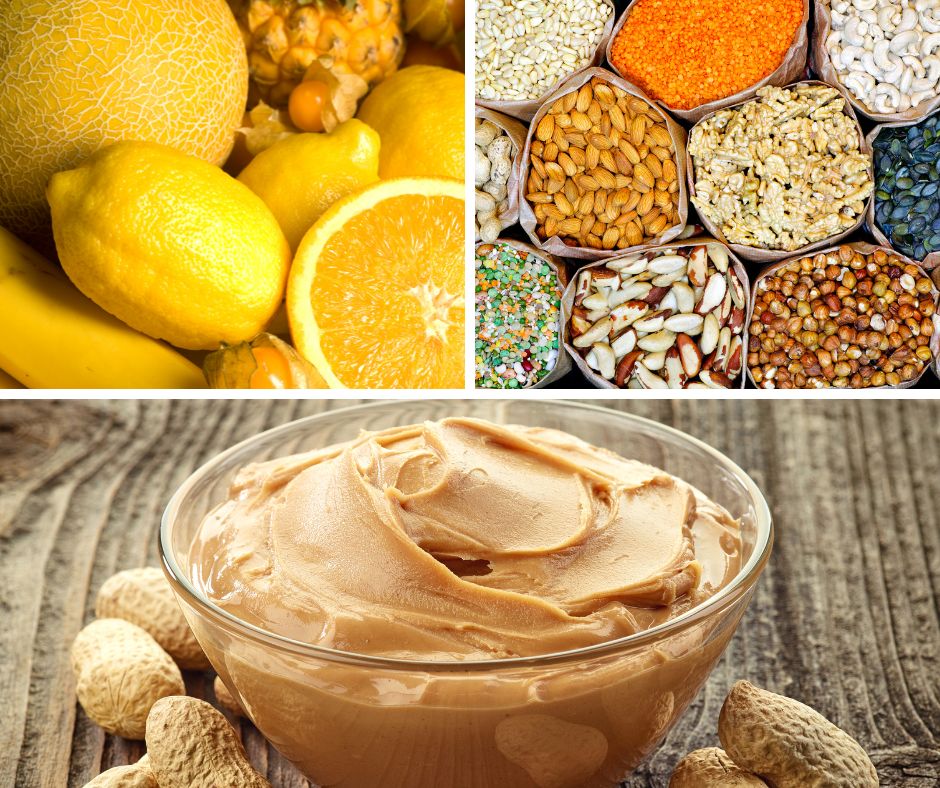
Certain Fruits
Fruits like lemons and tomatoes can be highly acidic for your tiny guinea pig. High amounts of acids can cause sores on your pigs.
Avocados are another food to avoid as they are very high in fat. Also, avocado’s outer layer and pit can be toxic to guinea pigs.
In general, most sugary fruits are to be avoided as sugar can lead to diabetes and can even affect the gut flora in the pig’s intestines. This can increase the bad bacteria and make your piggy susceptible to diseases and infections.
Nuts and seeds
Nuts are not safe food for guinea pigs as they have a high carbohydrate and fat content. Fatty foods are difficult on guinea pigs’ delicate digestive systems.
Guinea pigs love the taste and crunchy texture of seeds. Many commercial guinea pig foods also have seeds. However, seeds are not a natural part of guinea pigs’ diet. Their high fatty content can be very hard to digest for your little pig.
Peanut butter
Do not feed peanut butter to your guinea pig as they simply cannot digest the sugar, fat, and carbohydrates in it. Also, sticky peanut butter could be a choking hazard for your tiny piggy.
When Should You Feed Your Guinea Pig?
Guinea pigs need fresh and dry food on a daily basis.
Vegetables
- Feed the fresh foods like vegetables twice a day on schedule at the same time, preferably once in the morning and once in the evening.
- Follow the chart above to know exactly how much quantity is OK to feed your pet.
- In general, every guinea pig needs 1 to 1 ½ cups of fresh green, leafy veggies every day.
- Wash the vegetables properly. Cut them into pieces to make them easier to eat.
Pellets
- Feed vet-recommended guinea pig pellets only.
- Pellets can be fattening, so only feed 1/8th cup of pellets every day – no more.
- Discard uneaten pellets right away.
Fruits and treats
- Provide fruits and treats in absolute moderation.
- Wash the fruit well
- Cut it into bite-sized pieces.
- Provide no more than a few pieces of fruit once or twice a week.
Hay
- Keep fresh timothy hay available for your pets to chew on all day. This is very important to keep their sharp teeth toned down. You can keep hay on stacks or attach a hay feeder in the cage.
- The hay should appear fresh and green.
- Each pig should get at least 3 oz. of hay every day.
Oxbow Animal Health Western Timothy Hay
What Happens If There Is A Nutritional Imbalance In The Diet Of Guinea Pigs?
Your piggy can eat as much Timothy hay as it wants but you must practice portion control for pellets, fruits, and vegetables at all times.
Pellets can be extremely fattening. Some commercial pellets can also create a nutritional imbalance if eaten in excess. Your Guinea pig could get obese and obesity can lead to a variety of health problems in these tiny animals.
Vegetables and fruits should also be fed in moderation. Avoid feeding your pet sugary fruits on a daily basis. Fruits should be regarded as occasional treats only.
Too many vegetables can also cause diarrhea, gastric indigestion, and even kidney and bladder stones.
Diets high in calcium can also cause bladder stones in guinea pigs. Similarly, very low-calcium diets can also result in calcium leeching from their bones.
So, it is very important to have optimum calcium levels – neither too high nor too low. Your vet can guide you in this matter.
Any nutritional imbalances in guinea pigs can manifest in the form of a variety of health issues. These include
- Refusal to eat
- Difficulty in breathing
- Dull coat, hair loss
- Receding eyes
- Drooling
- Watery stools
- Slow response
- Imbalance and lack of coordination
You may want to weigh your cavy weekly to know if it is getting the right amount of nutrition. Any weight loss or weight gain of 1-2 ounces per week indicates dietary imbalance. See your vet immediately to bring your pet right back on track.
Conclusion – What Can Guinea Pigs Eat? A-Z Food List
Guinea pigs need to eat Timothy hay or orchard grass hay on a daily basis. Almost 75% of their diet should consist of high-quality hay.
They also need high-quality commercial pellets but feed no more than 1/8th cup of pellets daily to your average-sized adult piggy.
You can also feed leafy green vegetables in moderation (about one cup per day) to your small pets on a daily basis. Certain fruits and treats can also be fed once a week in tiny bite-sized quantities.
Foods like nuts and seeds, chocolate, candy, and cooked foods are strictly a no-no for guinea pigs.
We hope this comprehensive guide helps you keep your piggy healthy and happy!
